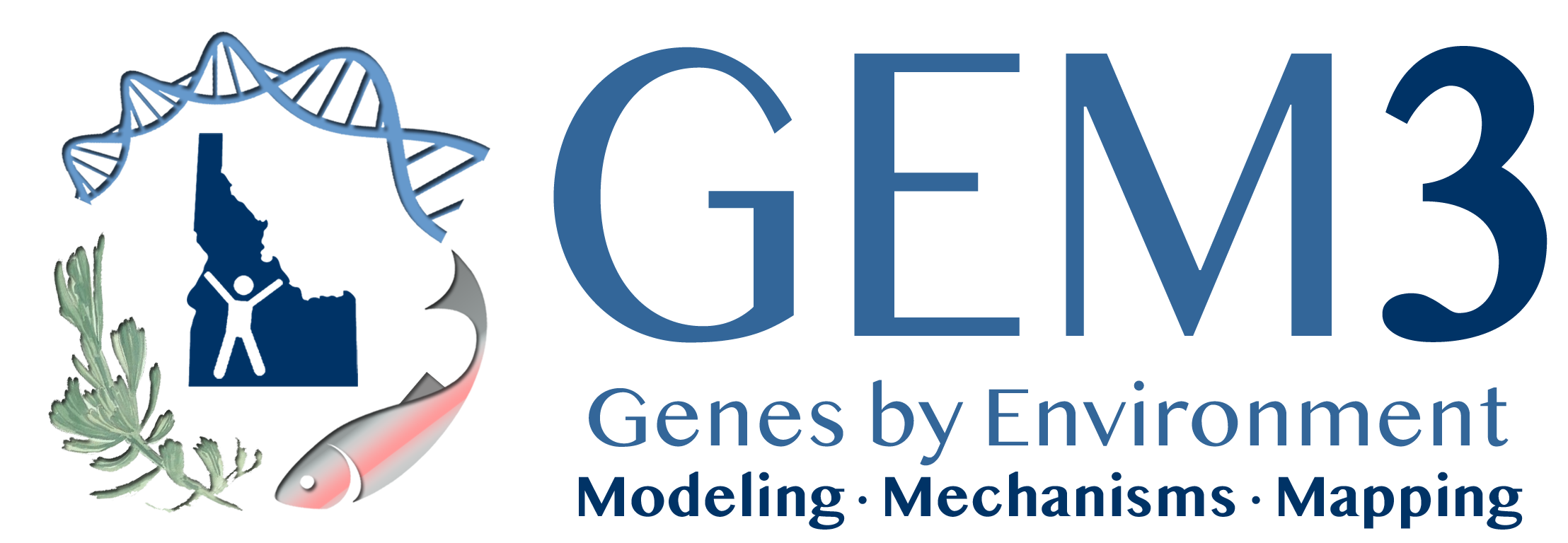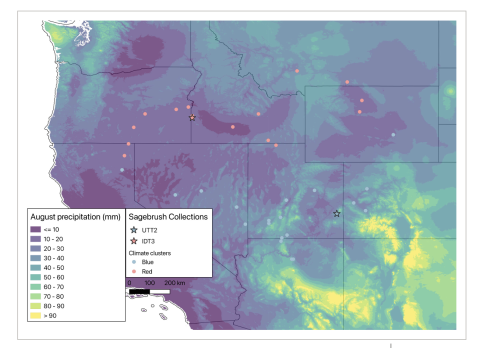Western North America has been experiencing persistent drought exacerbated by climate change for over two decades. This extreme climate event is a clear threat to native plant communities. Artemisia tridentata is a keystone shrub species in western North America and is threatened by climate change, urbanization, and wildfire. A drought Genotype × Environment (G × E) experiment was conducted to assess phenotypic plasticity and differential gene expression in A. tridentata. The G × E experiment was performed on diploid A. tridentata seedlings from two populations (one from Idaho, USA and one from Utah, USA), which experience differing levels of drought stress during the summer months. Photosynthetic data, leaf temperature, and gene expression levels were compared between treatments and populations. The Utah population maintained higher photosynthetic rates and photosynthetic efficiency than the Idaho population under drought stress. The Utah population also exhibited far greater transcriptional plasticity than the Idaho population and expressed genes of response pathways distinct from those of the Idaho population. Populations of A. tridentata differ greatly in their drought response pathways, likely due to differences in response pathways that have evolved under distinct climatic regimes. Epigenetic processes likely contribute to the observed differences between the populations.
Map of collection sites for Att with the color of symbols corresponding to the PCA cluster identified using climatic data. The source sites for IDT3 (Red cluster) and UTT2 (Blue cluster) populations are designated by stars. Principal component one explained 80.3% of the variance, and principal component two explained 17.1% of the variance. Points are overlaid upon the average precipitation (mm) in the month of August from WorldClim v2.1, highlighting differences in the amount of rainfall received by each population at the arrival of the NAM.
| GEM3 author(s) | |
| Year published |
2023
|
| Journal |
Plant-Environment Interactions
|
| DOI/URL | |
| Keywords |
Bioinformatics
Ecology
Genomics
Genotyping by Sequencing
Sagebrush
|
| GEM3 component |
Mechanisms
|
| Mentions grant |
Yes
|

